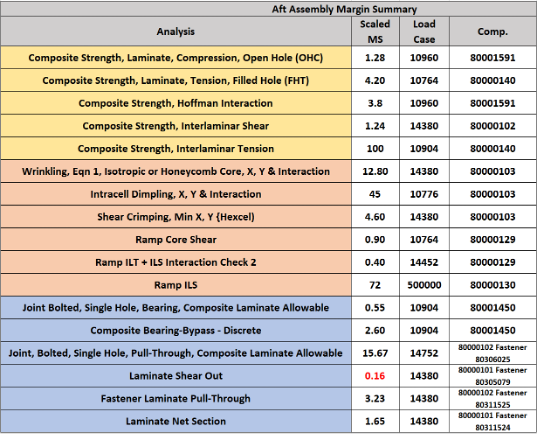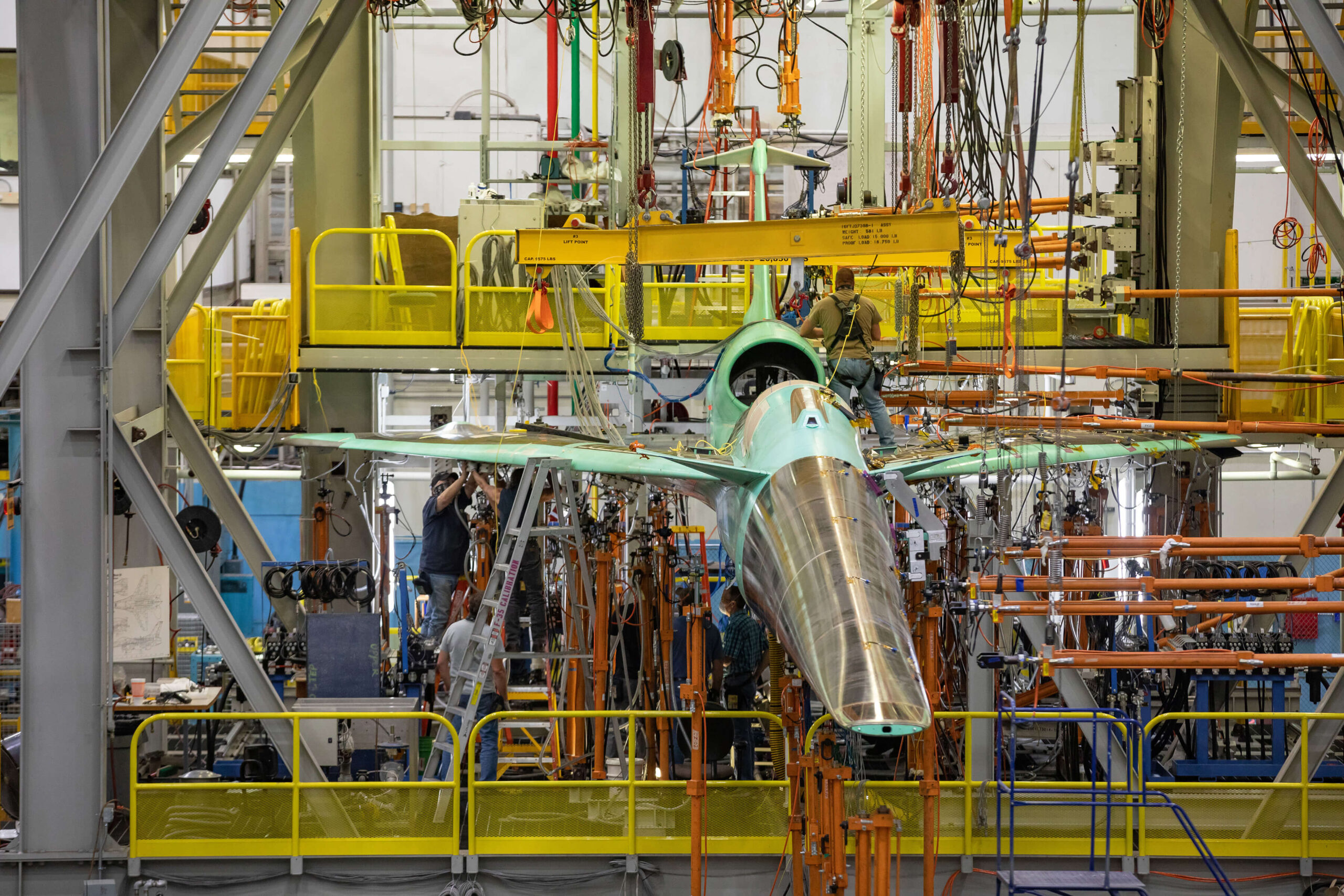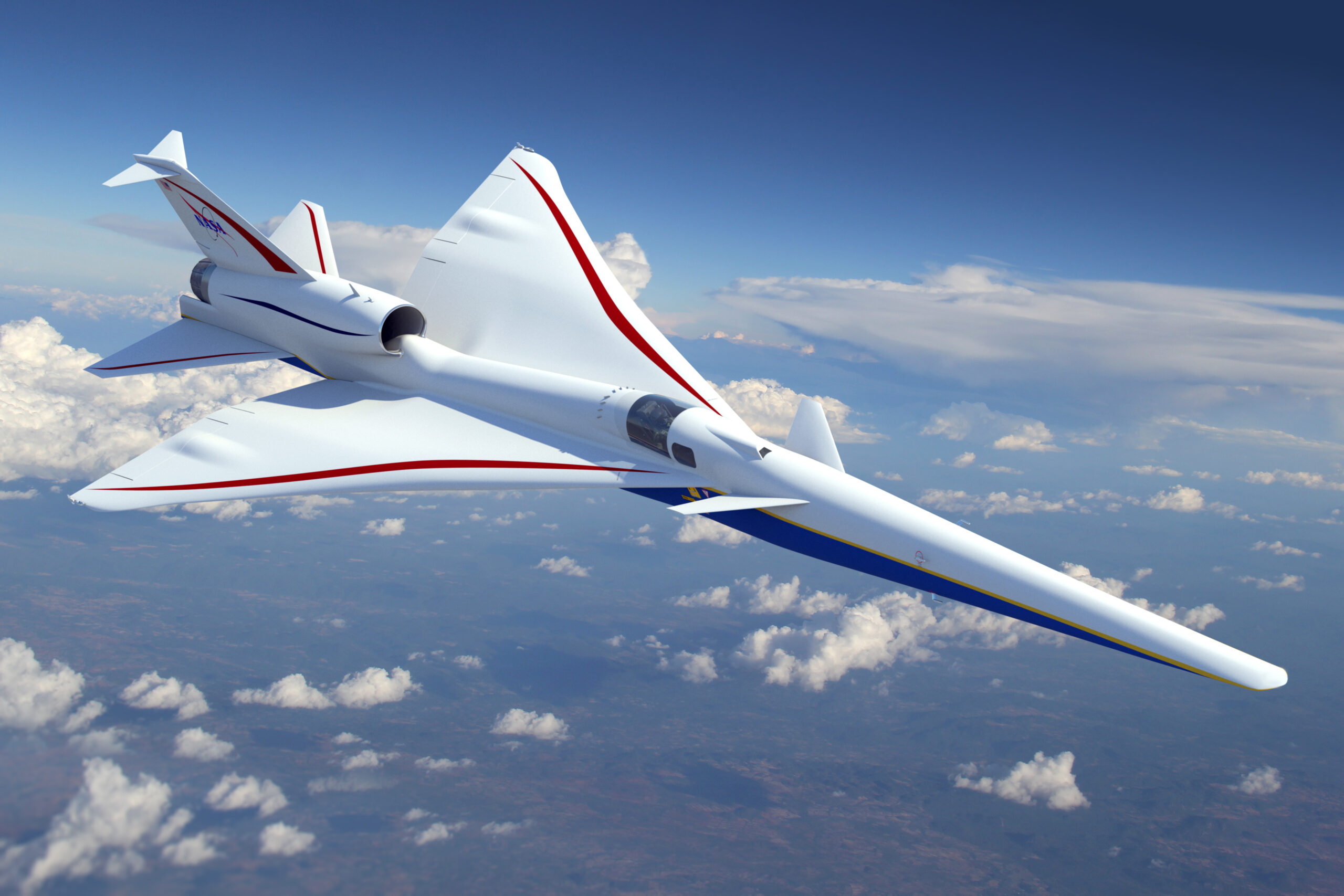Swift Engineering relied on the CAE software’s structural sizing, analysis and test validation capabilities to deliver flight hardware for NASA’s supersonic QueSST aircraft early, under budget and with 25% weight savings.
Click here to Read Composites World Article
January 7, 2025
Written By Collier Aerospace
Collier Aerospace’s design and analysis software was chosen by Swift Engineering, Inc., for structural sizing, analysis and test validation of the X-59 aircraft’s nose cone. Photo Credits: Lockheed Martin / NASA.
NEWPORT NEWS, Va. — Collier Aerospace Corp., developer of the HyperX® computer-aided engineering (CAE) solution, today announced that its design and analysis software was chosen by Swift Engineering, Inc., for structural sizing, analysis and test validation of the low-boom X-59 aircraft’s nose cone. This experimental aircraft from Lockheed Martin Skunk Works® is part of the Quesst (Quiet Supersonic Technology) mission of U.S. National Aeronautics and Space Administration (NASA) to quiet loud sonic booms. Swift Engineering was contracted to build and perform structural analysis and certification testing for the X-59’s distinctive, 35 ft.-long nose cone, designed to control aerodynamic pressure waves (shock waves), that form at the sharp nose tip during supersonic flight, resulting in quieter sonic booms.
Collier Aerospace’s software enabled Swift Engineering to remove mass that reduced the nose cone’s weight by over 25 percent while maintaining dimensional stability; evaluate the design for a wide range of load cases; and provide detailed stress reporting to support part release and fabrication. The company also used the software to perform detailed analyses, supporting structural testing substantiation of the structural design.
“The Collier Aerospace software played a critical role throughout this high-visibility project to design, engineer and build the X-59 nose structure,” said Bill Giannetti, technical consultant to Swift Engineering. “At the outset, when the team from Skunk Works explained how important lightweighting was, I had so much confidence in the software that I was convinced we would remove 100 pounds from the nose cone. However, we surpassed that goal by achieving a significant weight savings of over 25 percent on the nose cone structure.”
Giannetti added, “We were able to iterate the structural sizing software with our finite element analysis solver, which enabled weight reduction through structural optimization and rapid load path convergence. Once the system was set up, we could literally watch the mass come out of the nose structure, while meeting all the traditional aerospace failure criteria simultaneously. It’s a fantastic software tool.”
Meeting Rigorous Requirements
To lower the weight of the approximately 400-lb. preliminary design, which specified graphite/epoxy composite and a honeycomb-core sandwich structure, Swift Engineering’s team removed unnecessary plies, simultaneously optimizing the structure for stress and stability. The Collier Aerospace software enabled the team to quickly evaluate design alternatives by considering trade-offs in ply-layup schedules and core panel and edge band thicknesses, and then rapidly evaluate the change to the section stiffness and deflection.
Swift Engineering used the full capabilities of the Collier Aerospace software for this unique aircraft nose structure, extending beyond preliminary sizing and optimization to include conducting detailed laminate strength analysis using design allowables derived from testing. The software enabled the company to deliver the nose cone ahead of schedule and under budget.
HyperX® software automates stress analysis and design. It performs rapid structural sizing to all load cases, lightweighting and margin writing. The software helps ensure the producibility of a composite part by creating a design that is optimized for manufacturability. It reduces schedule time by speeding up the engineering cycle and shortening the U.S. Federal Aviation Administration (FAA) and European Union Aviation Safety Agency (EASA) certification processes.
From Boom to “Thump”
The goal of the X-59 aircraft, which is expected to make its first flight in 2025, is to help establish an acceptable noise standard for commercial supersonic flights over land, potentially resulting in U.S. and international regulators lifting a five-decade-long ban that was imposed due to loud sonic booms. Thanks to its unique geometry, particularly the elongated nose cone, the X-59 is expected to generate a barely audible thump rather than a boom, reducing noise impacts.
“We’re grateful that our software helped Swift Engineering achieve success with the X-59 nose cone and met the high expectations of Lockheed Martin Skunk Works,” commented James Ainsworth, vice president, Engineering Services, Collier Aerospace. “The high level of credibility that our solution has earned, and its powerful sizing and analytical capabilities, were key factors in Swift’s decision to choose our software. We’re looking forward to the X-59’s first flight.”
Collier Aerospace is currently exhibiting its HyperX® suite of structural software solutions in booth #425 at the 2025 AIAA SciTech Forum (January 6-10, 2025) taking place in Orlando, Fla. at the Hyatt Regency Orlando.
About SWIFT ENGINEERING
Based in San Clemente, Calif., Swift Engineering is an American engineering firm that provides products, technologies and fully integrated product development solutions from ideation to market. The company builds high-performance vehicles, specializing in unmanned systems, autonomy, robotics and advanced composites. Since its founding in 1983, Swift has produced over 500 vehicles in its advanced design and manufacturing facility. The company’s chairman and CEO is Hiro Matsushita, a former racecar driver and grandson of the founder of Panasonic, Konosuke Matsushita.
About Collier Aerospace
Collier Aerospace Corporation is a leading provider of computer-aided engineering (CAE) software for designing composite and metallic structures. Its flagship product, HyperX® software, is a structural solution for failure analysis, stress reporting, design sizing optimization and data traceability. It is used across multiple industries: aerospace, space launch, wind energy, and high-performance sports. The software enables designers and engineers to reduce weight, accelerate development, improve design producibility and achieve airframe certification. The company was founded in 1995 by engineers Craig and Ivonne Collier and is headquartered in Newport News, Va. Learn more at https://collieraerospace.com
The X-59, a unique experimental aircraft from Lockheed Martin Skunk Works®, is part of the Quesst (Quiet Supersonic Technology) mission of U.S. National Aeronautics and Space Administration (NASA) to quiet loud sonic booms. Photo Credits: Lockheed Martin / NASA


Example of HyperX/HyperSizer Sizing Results for Margins of Safety.
HyperX® is a registered trademark of Collier Aerospace Corportaion.

